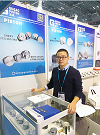
Privacy statement: Your privacy is very important to Us. Our company promises not to disclose your personal information to any external company with out your explicit permission.
1. The pond requires the selection of ample sunshine, good water supply, fresh water, no pollution, convenient water injection and drainage, quiet environment, and a pond with good water retention properties. The bottom of the pond is preferably sandy or pebbled, with as little silt as possible, and an area of 667 to 4,000 square meters and a depth of 1.5 to 2 meters is appropriate. Chinese barbs are active and jumpy. In addition to setting fish traps (nets) at inlets and outlets, they should also set about 1 meter high around the pond to prevent escape. Before stocking in the pool water, excavate too much silt, drying pool for 5 days to 7 days. Then the water depth is 10 cm, and every 667 square meters is disinfected with 100 kg to 125 kg of lime. One week after disinfection, the water injection depth was 1 meter, and 3 kg of urea, 2 kg of superphosphate, or 4 kg of imported compound fertilizer was used to feed bait organisms per 667 square meters.
2. Fish species breeding Chinese barbs: Fish species are generally released from January to April, and it is best to raise the rearing fish weighing 50g to 100g each year. Fish species require strong physique, no injury, disease-free, and the specifications are neat, and the stocking capacity is 800 to 1200 per 667 square meters. After stocking, the next day, 1 g of bleach powder per square meter of water is used to disinfect the whole water pool. Due to Chinese barbs, timid scared and scared, not suitable for polyculture of carp, squid, tilapia, etc. Lively or snatch ferocious fish, it is generally used a single breeding culture. In order to regulate water quality, 20 to 50 fish species with a length of 10 cm to 15 cm per 667 m2 can be mixed. When the fishes are stocked, they are sterilized with 3% to 5% saline for 10 minutes to 15 minutes.
3. After the feed is fed to the lower pool of fish, when the temperature of the water rises to 13°C, it is necessary to feed and feed it. Depending on the size of the pond, several feeding sites should be set around the pond, feeding quail, fly maggots, and squid feeds, and gradually adding artificial feed. After a period of time has been induced and domesticated, fish are gradually collected and fed to a bait station for feeding. The compound feed requires a protein content of about 40%, is fed 3 times a day, and is fed in the morning, noon and evening. Feeding should adhere to the "four set" method and be flexibly controlled according to the weather, water temperature and the fish's feeding conditions. Generally, the daily feeding amount is 3% to 6% of the fish's body weight. In addition to feeding compound feed, some green feeds such as ryegrass, corn leaves, pumpkin leaves, sweet potato leaves, duckweed and other plant debris can also be fed, and suitable animal feed supplements such as cocoon, snail meat and wild fish are supplemented.
4. Daily management In the natural environment, Chinese barbs prefer to inhabit rivers and streams with fresh water and rich dissolved oxygen. Therefore, we must try our best to create an ecological environment suitable for its growth in the breeding pond. Conditions permit the pond to drain while flushing to form micro-flowing water. If the conditions do not permit, it should also be flushed once every two or three days. When the water temperature is high, the water quality is poor, and the weather is not good, the flushing capacity should be more. Chinese barbs are less resistant to hypoxia than grass carp, chain fish, etc., but stronger than carnivorous fish such as carp, and are more sensitive to various pesticides, pollutants, etc. Therefore, they should be frequently injected and renewed during the summer and hot seasons. Water, a reasonable starting oxygen, increase the amount of dissolved oxygen in the pool to avoid floating dead fish. Before injecting or changing water, it is necessary to understand whether the water source is contaminated and it is determined that the water quality is good before it can be discharged into the pool. Adhere to the morning and evening patrol, observe the weather, water temperature, water level, changes in water quality, fish eating and other conditions, and clean the food table, remove the residual bait, etc., regularly disinfect the food court medication. Chinese barbs, timid, scared and scared, usually pay attention to keep the breeding environment quiet, except for feeding and other situations, the management personnel should move as little as possible in the pool to reduce human interference.
Author:
Mr. alex
Phone/WhatsApp:
+8613706888509
October 30, 2023
May 24, 2023
August 01, 2023
August 01, 2023
อีเมล์ให้ผู้ขายนี้
Author:
Mr. alex
Phone/WhatsApp:
+8613706888509
October 30, 2023
May 24, 2023
August 01, 2023
August 01, 2023
January 25, 2024
January 25, 2024

Mr. alex
โทร:
+86-577-65268518
Fax:
E-mail:
เว็บไซต์โทรศัพท์มือถือ


Privacy statement: Your privacy is very important to Us. Our company promises not to disclose your personal information to any external company with out your explicit permission.

Fill in more information so that we can get in touch with you faster
Privacy statement: Your privacy is very important to Us. Our company promises not to disclose your personal information to any external company with out your explicit permission.